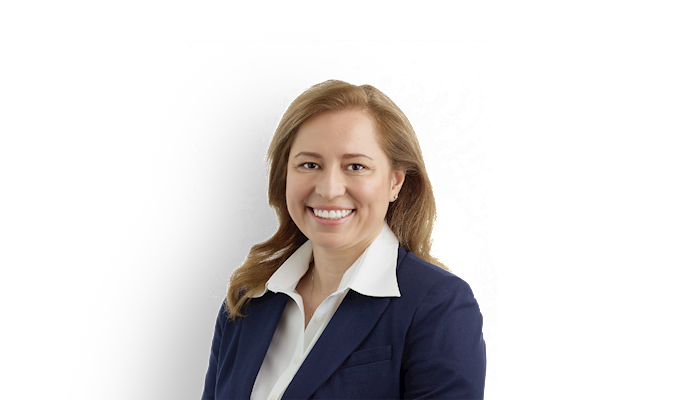Note: The authors wish to note that a previous version of this article was published in September of 2022. Since the original publication, legislation concerning the FHSA has changed. This updated article seeks to update and reflect the recent changes to the FHSA regime.
On Aug. 9, 2022, the Government of Canada introduced draft legislation for the tax-free First Home Savings Account (FHSA) first announced in the 2022 Federal Budget. The FHSA, which combines features of an RRSP and a TFSA, will provide Canadians under age 72 the ability to contribute up to $40,000 on a tax-free basis towards the purchase of a home.
Bill C-32 received royal assent on Dec. 15, 2022, and comes into effect on April 1, 2023, where qualifying individuals may enter into a qualifying arrangement with an issuer of a FHSA. Applications for specimen plans are currently being processed and Canadians can expect to open an account later in the year.
Overview
A qualifying individual will be able to contribute up to $8,000 annually to a total of $40,000 to a FHSA, which may be offered by providers of other registered plans. Unused contribution room from a previous year can be carried forward for a maximum contribution of $16,000 in a given year (being $8,000 carry-forward plus the $8,000 annual limit, assuming no contributions were made in the year prior). Over-contributions will be subject to a tax at the rate of 1 per cent/month (or part month). Similar to an RRSP, contributions made in a calendar year are tax deductible in that year (unlike an RRSP contributions made in the first 60 days of a calendar year cannot be deducted in respect of the prior year). The individual may withdraw FHSA amounts on a tax-free basis to fund the purchase of a home that is a qualifying transaction. FHSAs must terminate on December 31 of the year following the year in which earliest of these events occurs:
- the first qualifying withdrawal from the FHSA;
- the holder turns 70; or
- the 14th anniversary of opening the holder’s first FHSA account.
Unused FHSA funds can be withdrawn on a taxable basis or transferred, tax free and without reducing any available contribution room, to another FHSA or a RRSP or RRIF of the holder subject to the detailed provisions of the Income Tax Act. Tax-free transfers are also available to a FHSA, RRSP or RRIF of a spouse or common law partner of the holder on death of the holder or pursuant to a court order or written agreement on the breakdown of a marriage or common-law relationship.
Similar to other registered plans, funds in a FHSA must be invested in qualified investments under the Income Tax Act in order to avoid penalty taxes. The prohibited investment and advantage tax rules that apply to other registered plans will also apply to FHSAs.
Qualifying individual and qualifying arrangement
To open a FHSA, an individual must be a resident of Canada, be between the ages of 18 and 71 years of age and cannot, at any time during the year or the four preceding years, have owned or had an interest in a qualifying home (which for this purpose includes a home outside of Canada) inhabited by the individual as their principal place of residence. Interests as a beneficiary of a trust which owns a home are included.
Since November, language concerning the definition of “qualifying individual” has been amended and now follows existing language as found in the Home Buyer’s Plan thus removing the concept of “beneficiary interest.” The definition of “qualifying withdrawal” went through a similar revision that mirrors Home Buyer’s Plan language and includes the definition of “owner-occupied home” under para 146.01(2)(a.1).
Importantly, a “qualifying individual” for the purposes of opening an FHSA arrangement, cannot at any time during the year, or four years prior to opening an account, inhabit a qualifying home owned by themselves or by a spouse or common-law partner. This precludes the ability for an individual to open an FHSA when their spouse/partner owns their own home.
Individual’s will be required to self-certify eligibility when applying to open a FHSA.
Contributions
Contributions by the holder are tax-deductible. Contributions can also be made by way of transfers from the holder’s RRSP, but no tax deduction is available when transferring amounts from an RRSP to a FHSA. Contributions are limited to the deduction limit for the year.
Unlike an RRSP, spousal contributions are not permitted. In other words, one spouse or partner cannot contribute $16,000 to be split evenly between each holder’s FHSA accounts and claim an equivalent deduction to taxable income. However, one spouse can gift the contribution amount to the another spouse tax-free for the recipient to contribute to a FHSA.
Additionally, and in a complete reversal to the November draft version of the FHSA, the disqualifier under the definition of “qualifying withdrawal” which prevented dual use of both the FHSA and Home Buyer’s Plan, has been removed. A holder can now receive a regular eligible amount from an RRSP (i.e. a benefit out of an RRSP) while still meeting the criteria under “qualifying withdrawal” so both plans can be accessed for a single qualifying home.
Qualifying withdrawal
A holder who is then resident in Canada and does not have an “owner-occupied home” (determined under the Home Buyer’s Plan rules applicable to RRSPs) for the four preceding tax years will be able to request a withdrawal from the plan for the purchase of a qualifying home. A qualifying withdrawal requires a written agreement for the acquisition or construction of a home before October 1 of the calendar year following the year in which the amount was received. The purchase arrangements must meet certain timing requirements and precludes an individual from acquiring a qualifying home more than 30 days before making a qualifying withdrawal.
Death of a FHSA holder
The holder of a FHSA can designate a spouse or common-law partner as the successor holder. The surviving spouse or common-law partner can then receive the FHSA on a tax-free basis (assuming they are a “qualifying individual”), without any impact on their own contribution limits. The inherited FHSA would assume the surviving spouse’s termination date. Where there is no successor holder, there will be tax triggered on death. We note that provincial succession legislation will need to be amended to accommodate beneficiary designations on FHSAs in a similar manner as for other registered plans.
Availability
Subject to service providers and the Canada Revenue Agency being equipped to design and register these plans, the intention continues to be that FHSAs will be available “at some point in 2023” so that “Canadians would be allowed to contribute the full $8,000 annual limit in that year”.
On March 27, 2023 the Canada Revenue Agency released a full suite of online guides and examples concerning FHSA treatment under the Income Tax Act. This suite of online commentary includes discussions on scenarios related to account transfers, contribution limits and withdrawals. This guidance will be welcomed and appreciated by taxpayers who are ready to open their own FHSA prior to 2024.1
If you have any questions about the First Home Savings Account, please feel free to reach out to your BLG lawyer or any of the key contacts listed below.


